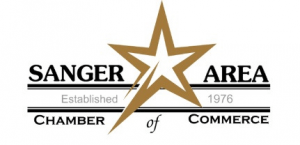Franchises and the Fine Print: What to Know Before Taking the Leap
Breaking into the world of franchising may seem like a shortcut to business ownership, but it’s not the kind of shortcut that skips any of the heavy lifting. A franchise brings the security of a proven model, name recognition, and often a blueprint for operations, but none of that guarantees success. Behind every glowing billboard and familiar logo is an agreement with terms that shape every decision, every hour, every dollar. So before diving in, it’s worth peeling back the branding and taking a clear-eyed look at the less advertised side of franchise ownership.
Location Isn’t Just Real Estate, It’s Relevance
Franchisors might emphasize site selection, but what really matters is local relevance. Not every burger chain works in every suburb, and not every gym draws crowds in every zip code. The best location isn’t just high-traffic or affordable — it’s a fit. That means taking time to understand local habits, nearby competition, zoning quirks, and even community sentiment. Some franchises do extensive research for you, but it’s still crucial to ground truth those findings before locking in a lease.
The Franchise Agreement Is the Real Product
It’s tempting to think the product is the coffee or the tutoring service or the fitness program. But the real product you’re buying into is the contract — the franchise agreement. This document spells out exactly how you’ll operate, what you’ll pay, when you can sell, and what you can’t ever do. And it’s written to protect the brand, not the individual owner. Those who skip legal review or sign before fully digesting the details often find themselves boxed into more than they bargained for.
The Franchise Fee Isn’t the Finish Line
There’s often confusion between what it costs to buy in and what it takes to stay afloat. The franchise fee is just the beginning: startup equipment, fit-out costs, insurance, staff, marketing contributions, and monthly royalty payments all add up — fast. Cash flow can tighten quickly, especially in the first year when traffic hasn’t picked up and bills start stacking. Running out of funds early is a common reason franchise locations shutter, even when the brand itself is strong.
Systems That Make the Numbers Work
Managing a franchise’s financials gets chaotic fast without a reliable way to store, access, and edit critical documents. Implementing a document management system brings structure to the process. For instance, converting a PDF to Excel allows for easy manipulation and analysis of tabular data, providing a more versatile and editable format. Once the necessary adjustments are made in Excel, the file can be saved back as a PDF, preserving the layout while locking in the edits — offering both flexibility and professional polish. For a deeper dive, see this overview of PDF to Excel spreadsheet methods.
Training Is Only as Good as Its Real-World Fit
Most franchisors offer onboarding and operational training, which is a major draw. But good training in theory doesn’t always translate well on the floor. A manual can’t capture the subtle challenges of running a business in a tough neighborhood or during a labor shortage. It’s smart to ask not just how training is delivered, but whether there’s ongoing support, mentorship, or access to a network of fellow owners who can share what the manuals left out.
Marketing Isn't Just Taken Care Of
One of the biggest misconceptions in franchising is that the brand handles marketing. National campaigns might build recognition, but they don’t drive local foot traffic. Owners are usually responsible for on-the-ground outreach — whether that's hosting events, running local ads, or sponsoring community groups. The franchisor may provide materials or guidelines, but execution often falls squarely on the franchisee’s shoulders. Those expecting a turnkey marketing machine usually find themselves scrambling to connect with their neighborhoods on their own.
Opening a franchise isn’t the same as launching a personal passion project, but it isn’t a passive investment either. It’s an active, hands-on commitment with restrictions and expectations — but also with the potential for rewarding returns when done thoughtfully. The trick is not to be seduced by logos or legacy but to look past the surface and understand the work, terms, and responsibilities that come with the brand. Because in the end, even the most recognizable franchise is only as strong as the person running the place — and the decisions made before the doors even open.
Discover the vibrant business community of Sanger by visiting the Sanger Area Chamber of Commerce and explore how you can connect, grow, and thrive with us!

